You may have heard of Seamless Wholecut Oxford, the eptiome of shoemaking, at least on handlasting skills.
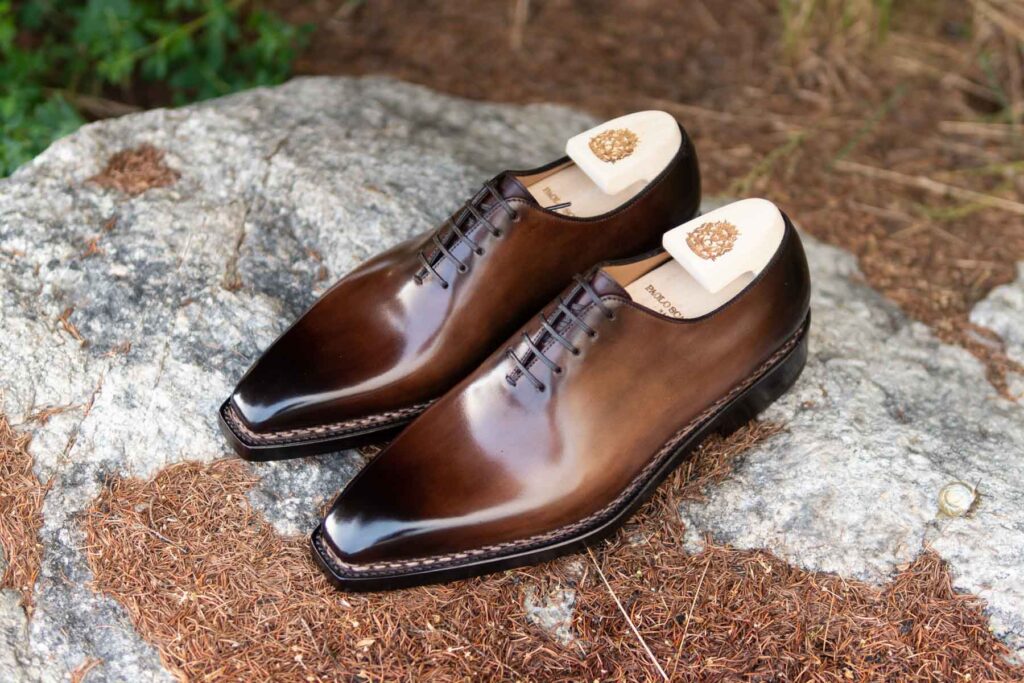
The upper is made of a piece of leather without any functional or decorative stitching.
Its advantage is that it is very simple, which is equivalent to Chelsea boots in shoes.
A reader asked me a question. Is Seamless Wholecut Oxford more suitable for a square toe or a round toe?
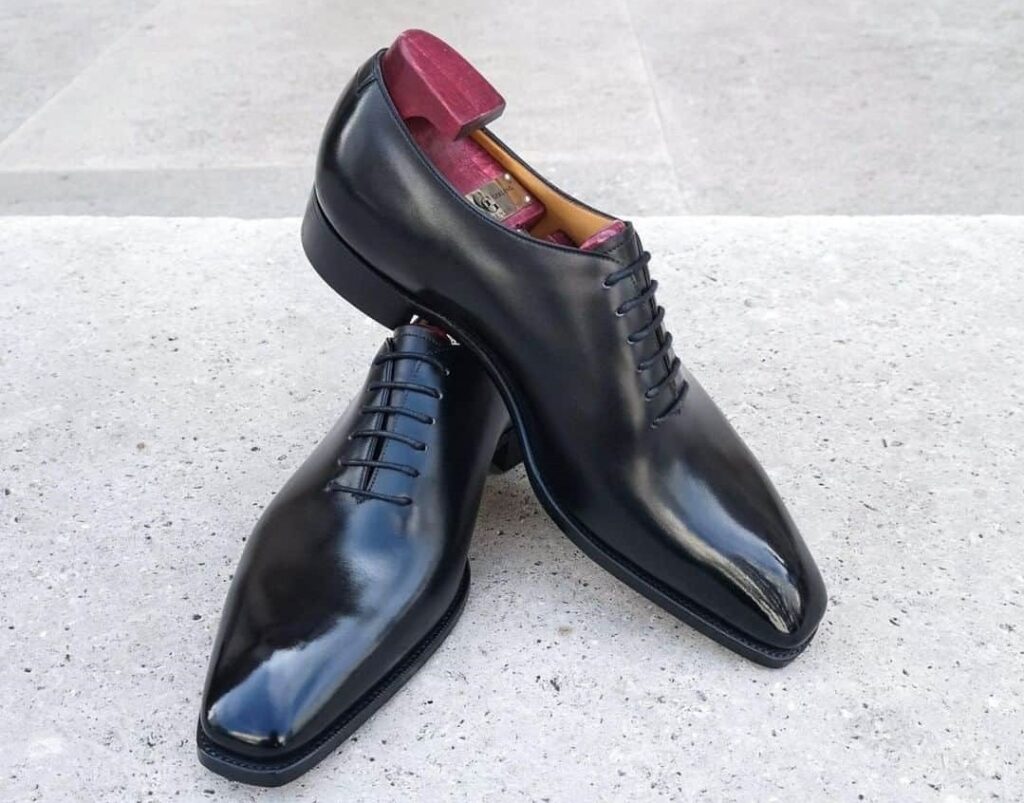
I think it’s a very good question. My answer is round toe. Isn’t the square toe more aggressive?
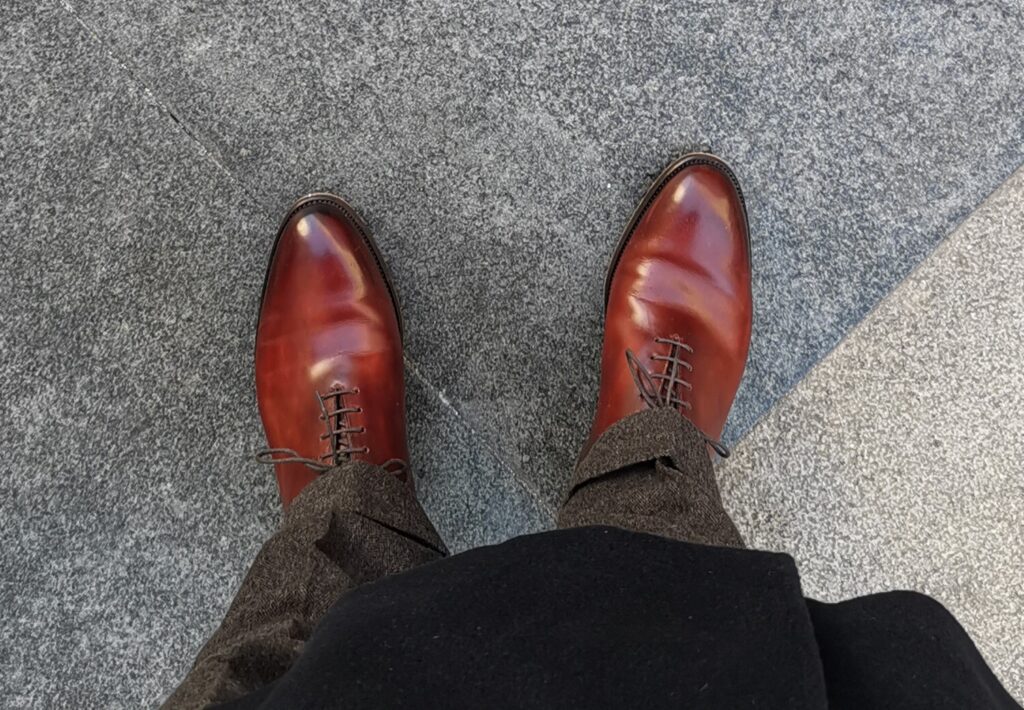
It is true that the square head is more aggressive, but the upper design language of Seamless Wholecut Oxford is smooth and integrated. So on the last, do you think that round toe is smoother than square toe?

Wholecut oxford is not rare and offered by almost every brand, however seamless wholecut oxford is a legend.
On the shoes, it seems that there is only a difference between whether a heel has a stitch or a “band-aid”, but in terms of the difficulty of making, it is totally another world.
The making process of Seamless Wholecut is that completely cover a piece of leather on the last, and then pull the leather underneath to make the leather match the shape of the last.
The method is not a secret, however why so few achieves it?
Because it takes practice to master the pull strength. Because the top can’t be adjusted, pulling the bottom is the only way. To find the optimal angle and strength is the key. If you are not careful, you will tear the leather.
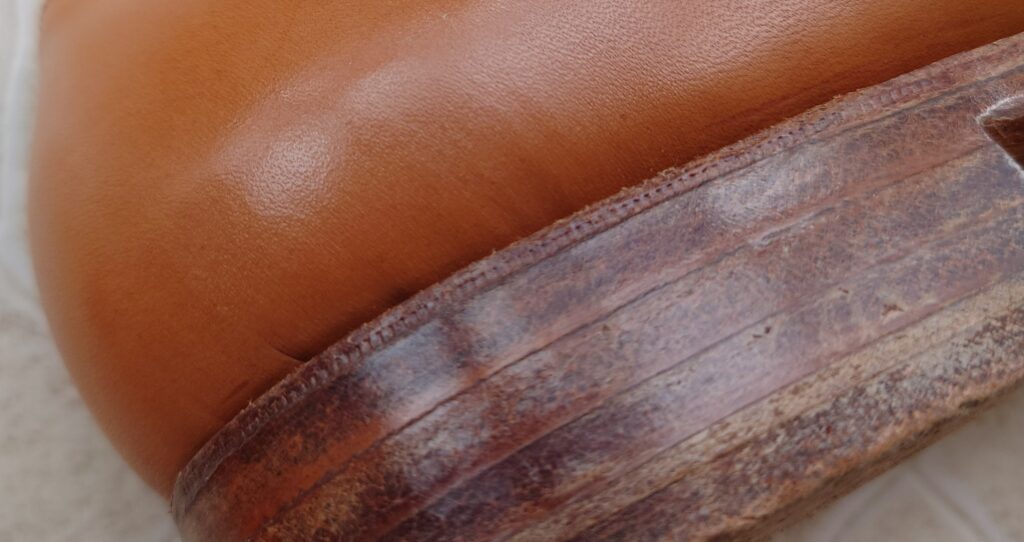
This is why such traces can be seen in this area on seamless wholecut, which is caused by the strength.
But if there is no such trace, it is doubtful whether the leather of the upper is tight. If the upper is not tightened, the shoes will be out of shape, and there will also be large creases (large creases are loose on the upper, not due to the quality of the leather).
Well, we finish seamless wholecut. It’s easy for you to understand Seamless Lining. But, have you ever seen it?

This concept was told to me by Mr. Alexandru Maftei, and when introducing the characteristics of his shoes, he did not say anything about seamless wholecut. Instead, he told me, “My shoes are seamless lining”.
At that time, I didn’t study it carefully.
Recently, I have nothing to do, so I began to do “countdown” again to continue my comparative research on dress shoes.
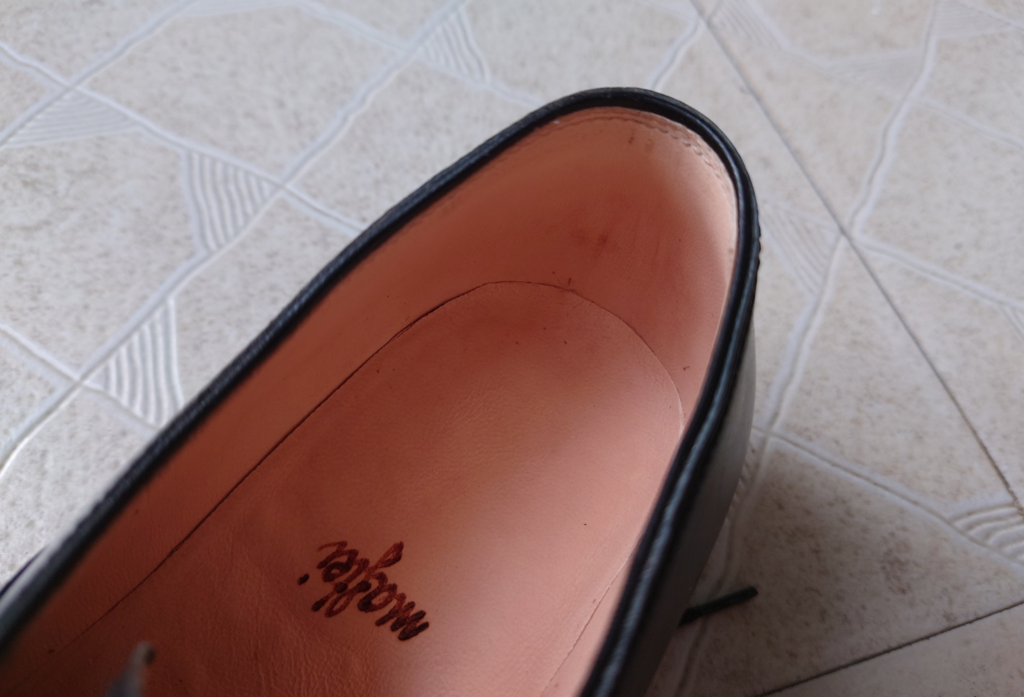
This pair is my own Maftei all-blind stitched Schubert. The so-called seamless lining is that there are no seams in the lining. Just look at the heel directly.
Here we first remember the appearance of the seamless lining, and then we can take a look at the common lining forms.
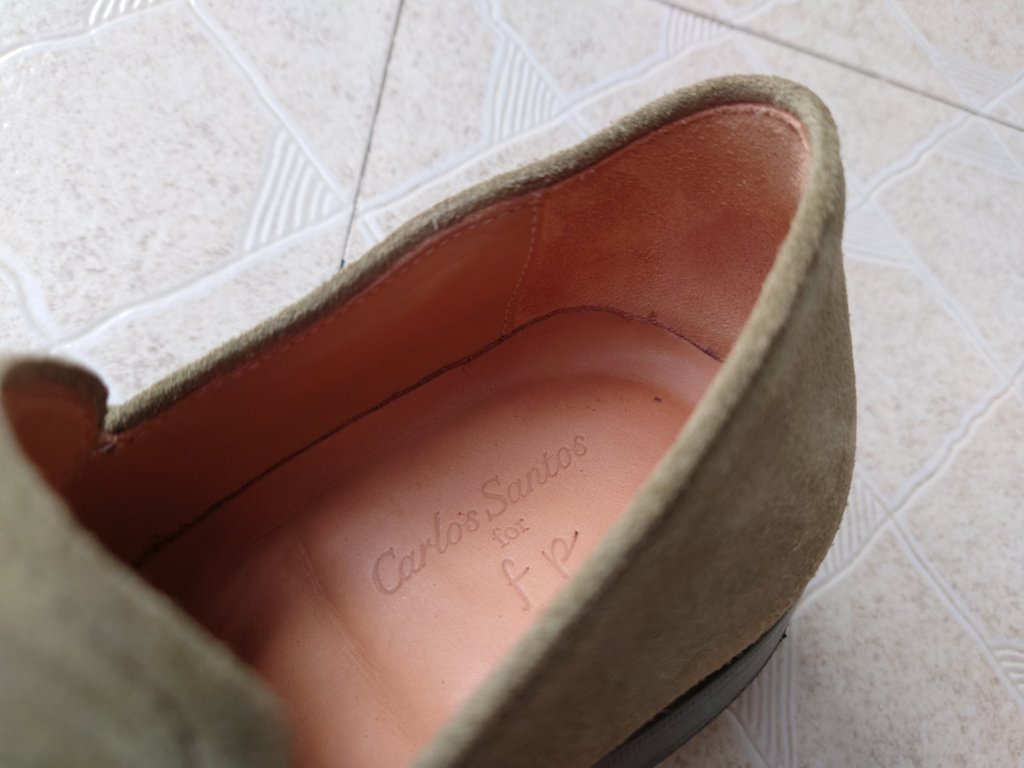
This pair of Carlos Santos Aubercy is the usual way, and the heel is suede. The purpose is to increase the friction so that feet will not fall off easily. The seams of different leathers are obvious.
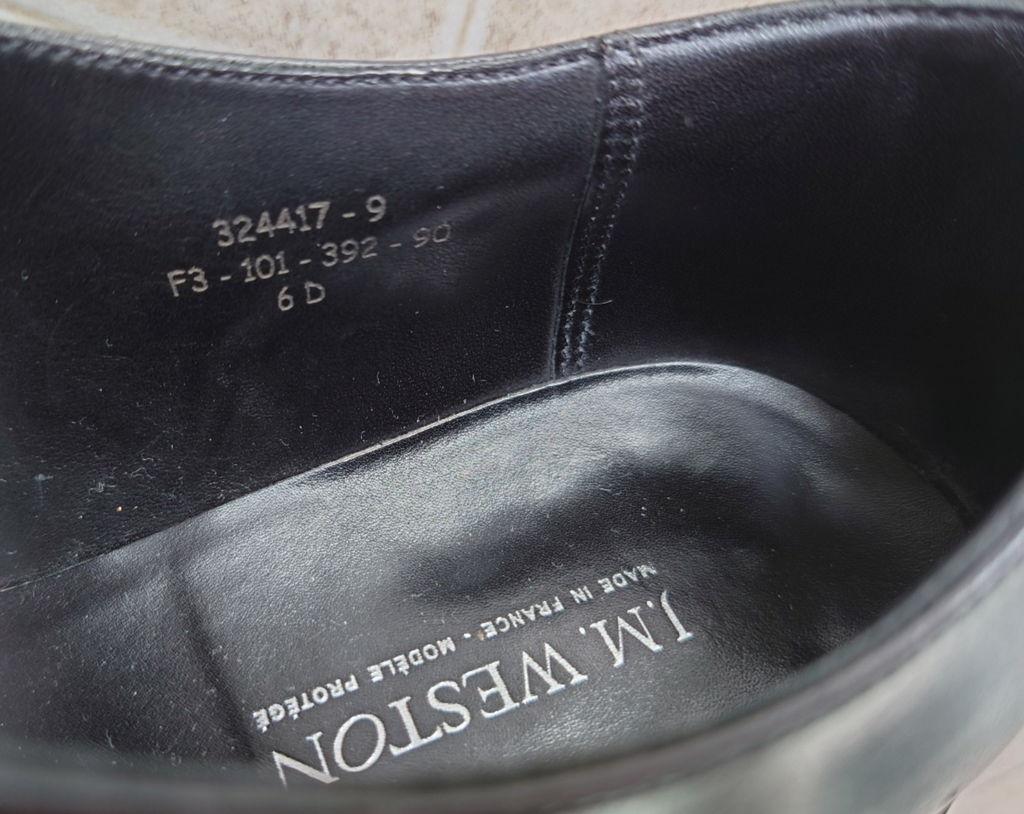
This pair of J.M.Weston 392 puts seams on the side of the heel. From this double-line seam, we can understand J.M. Weston shoemaking concept, which is sturdy and durable.
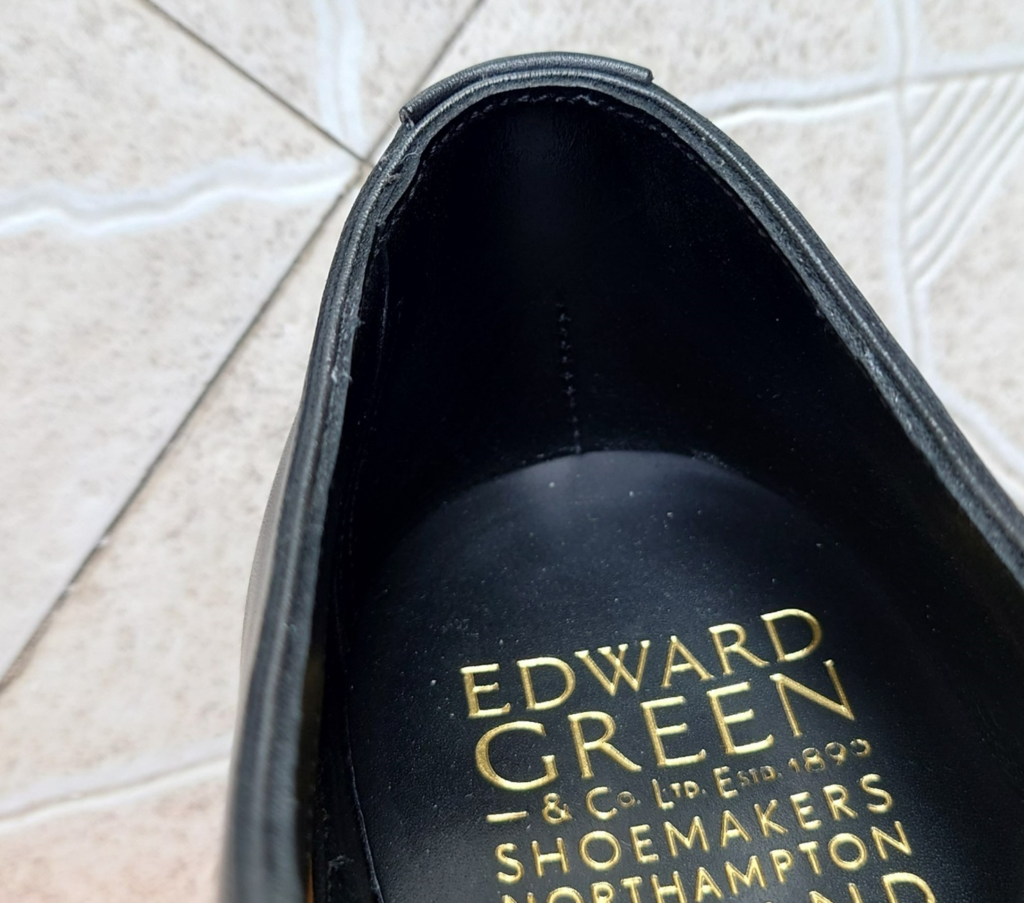
The stitch of the heel is only half the height, which makes me wonder whether this leather is one piece or two pieces? However, if you look at the following picture, it is clear.

The lining of the back and the lining of the forep are two pieces of stitched together.
I’m also curious about this point. What are the advantages? I have no answer.
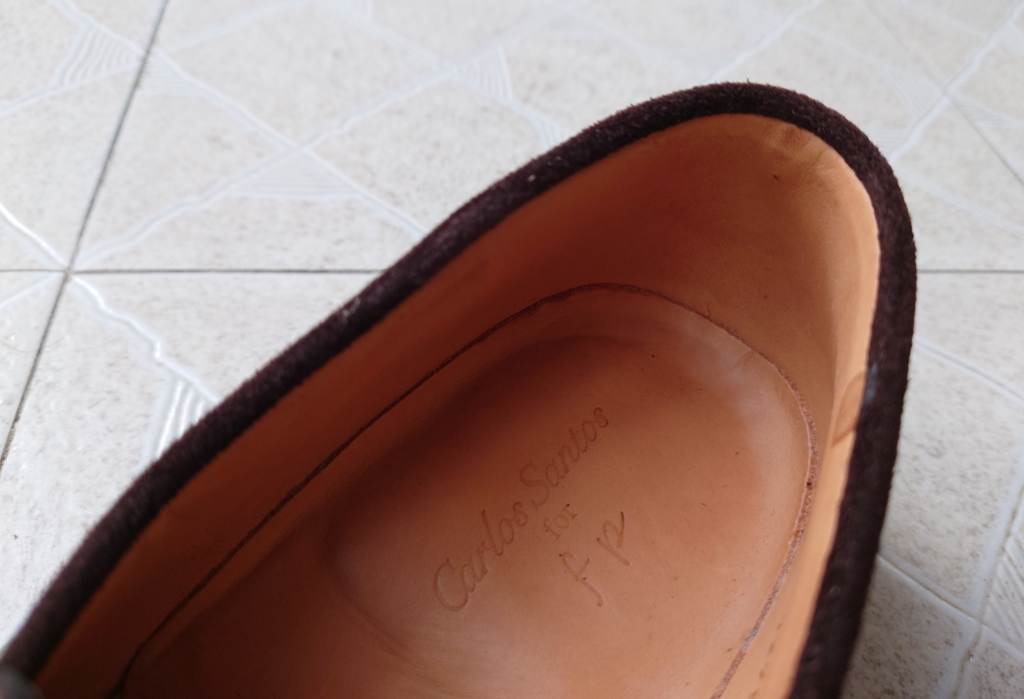
I saw a surprised scene on the Weston of Carlos Santos, what! Will the real one-piece lining be used on this level of shoes?
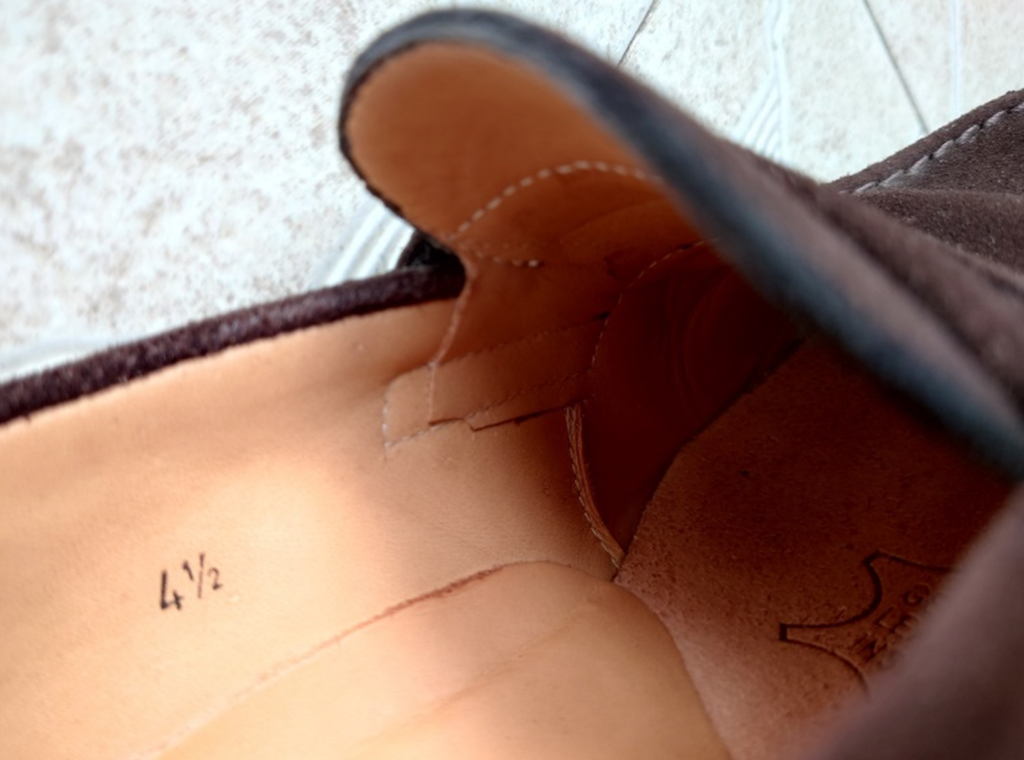
In fact, like Edward Green, the back is a piece of leather, the forefoot is another piece of leather, and the stitching is done at the waist of the shoe.
Conclusion
Seamless Lining is the same as Seamless Wholecut Oxford. It doesn’t make much sense for people who wear shoes, or for others to see shoes. But if it is regarded as a handicraft and a work of art, any further innovation and challenge is worthy of encouragement and admiration.

